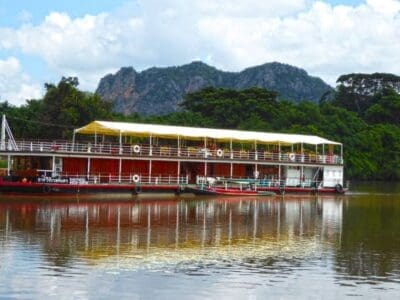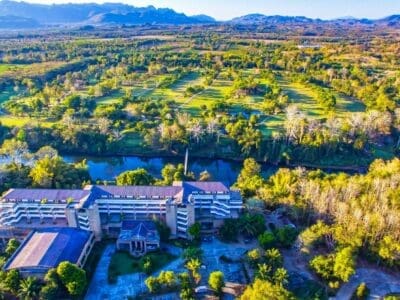Culture and history info
Archaeological remains found in Kanchanaburi date back to the 4th century, with evidence of trade with surrounding regions at that time. Very little is known about the historical Khmer influence in Kanchanaburi, but Prasat Muang Sing, one of the country's most well-known Khmer sites, provides evidence of their occupation.
Bridge over the River Kwai by Leo Rawlings, a POW who was involved in the line's construction (sketch dated to 1943).
Not much was historically recorded about Kanchanaburi Province before the reign of King Rama I, but some historians believe that the province was of strategic importance during the Ayutthaya period, since it was on the invasion route from Burma.[citation needed] In 1982, many human and elephant skeletons and swords were found in Phanom Thuan District, leading to speculation that this site might even have been the site of the famous battle of King Naresuan against the Burmese crown prince, most commonly assigned to the Don Chedi District in nearby Suphanburi Province.
Bridge over the River Kwai, Kwai River.
Most foreigners are mainly aware of Kanchanaburi's recent history with the Death Railway. During the Japanese occupation of Thailand in 1942, both allied POWs and Asian laborers were ordered by the Japanese to build a Thailand-Burma railway. Eventually, more than 100,000 people (16,000 allied POWs and 90,000 local Asian laborers) died from horrific working conditions






